The road can be a dangerous place, especially after nightfall. Visibility is vital to keeping everyone safe on the highways, so it’s important to have working car lights. With various types of lights on a car available, choosing which one serves your purpose best could mean all the difference regarding safety while out on the road. Whether you’re looking for headlights, fog lamps, or emergency flashers – this post will provide an in-depth analysis of different types of lights on a car, their specific uses, and what you should look for when deciding. Let’s get started!
Types of Car Lights and Headlights
Types of car lights and headlights serve different purposes and are critical for safe driving. From high-beam headlights to dipped headlights, brake lights, tail lights, hazard lights, and fog lights, each type plays a unique role in improving visibility and safety on the road. In this post, we will provide a comprehensive overview of the different types of lights on a car, their specific uses, and when to use them. By the end of this article, you will have a better understanding of which car lights to use in different scenarios to ensure your safety and the safety of others on the road.
1. Headlights
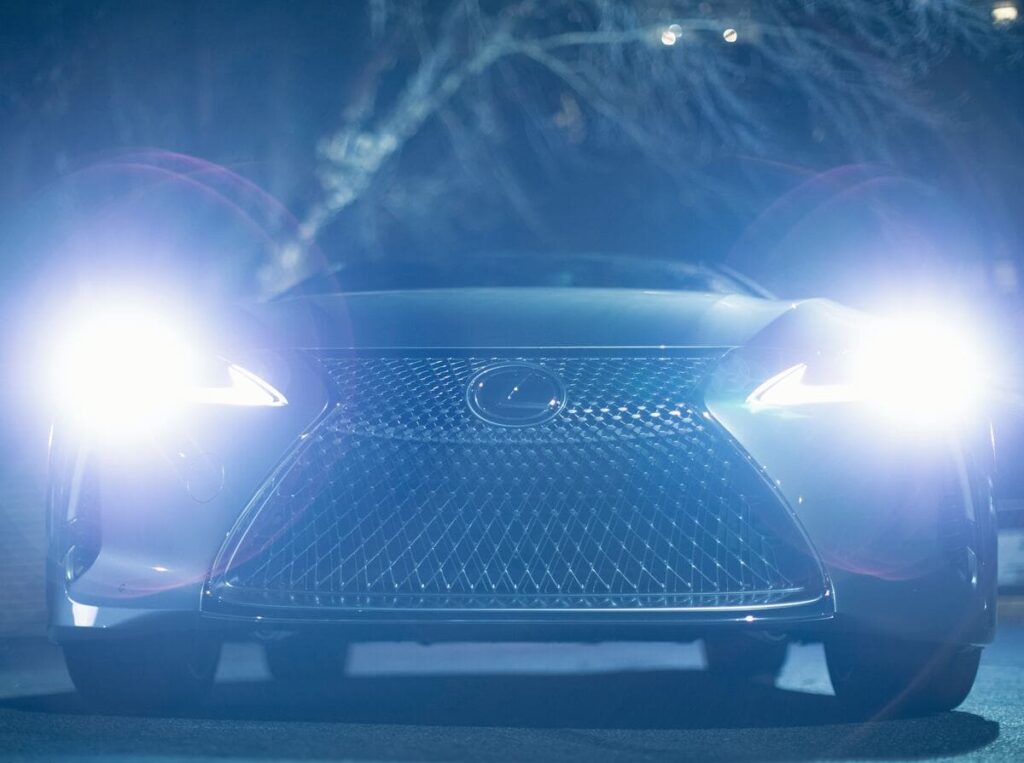
The main purpose of car headlights is to illuminate the road and help drivers drive safely. To know about different types of headlights and when to use them, let’s have a look at the discussion below:
High Beam Headlights
High-beam headlights throw bright light to further distances on the roadway. The light is directed parallel to a road so that you can look as far as possible while driving, almost 100 meters ahead on a road. However, if used incorrectly, high-beam headlights can cause risk to other drivers by blinding them while driving. Usually, these headlights should be used within a certain distance of an approaching vehicle or a vehicle that you are following. Otherwise, the excessive brightness of these lights can endanger other drivers.
When to Use High Beam Headlights
These lights shine at a specific angle to light up the roadway around 300 to 400 feet ahead so that drivers do not have to drive their vehicles in the dark. You should use high beam headlights in these scenarios:
- Dark roadway
- Poor visibility in unfamiliar road, construction zone or interstate highways
- Roads in rural areas or open highways with minimum streetlights
Use high beam headlights to improve the visibility of the roadway and drive safely.
Dipped Headlights
Dipped beam headlights, also known as low beam headlights are placed infront of a vehicle, just next to main beam lights and sidelights. These lights are also used to improve visibility while driving at night. Unlike high beam headlights, dipped headlights are slightly pointed downwards so that other drivers do not get dazzled when your vehicle approaches them.
When to Use Dipped Headlights
- At night
- In dull foggy day
- During heavy rainy day
The dipped headlights increase your presence on a road for other drivers. Therefore by using these lights you can avoid possible accidents on the road when the visibility is poor.
2. Tail Lights
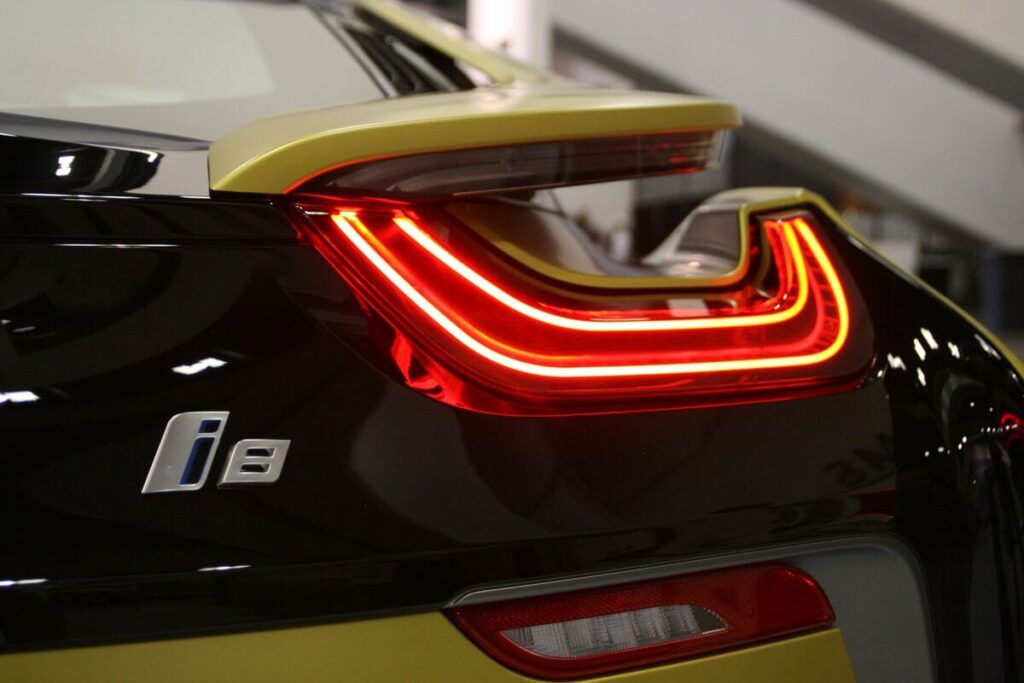
Tail lights are the red lights located at the rear of a vehicle. Their purpose is to make the vehicle more visible from behind, helping other drivers to identify it and see when it is braking. Tail lights also help to illuminate the license plate so that it can be seen at night.
When to Use Tail Lights
Tail lights should be used whenever your vehicle is in motion, day or night. They are used to indicate to other drivers that your vehicle is ahead of them and that they should be aware. Tail lights also help other drivers gauge the speed of your vehicle and should be used during any time of day or night.
3. Brake lights
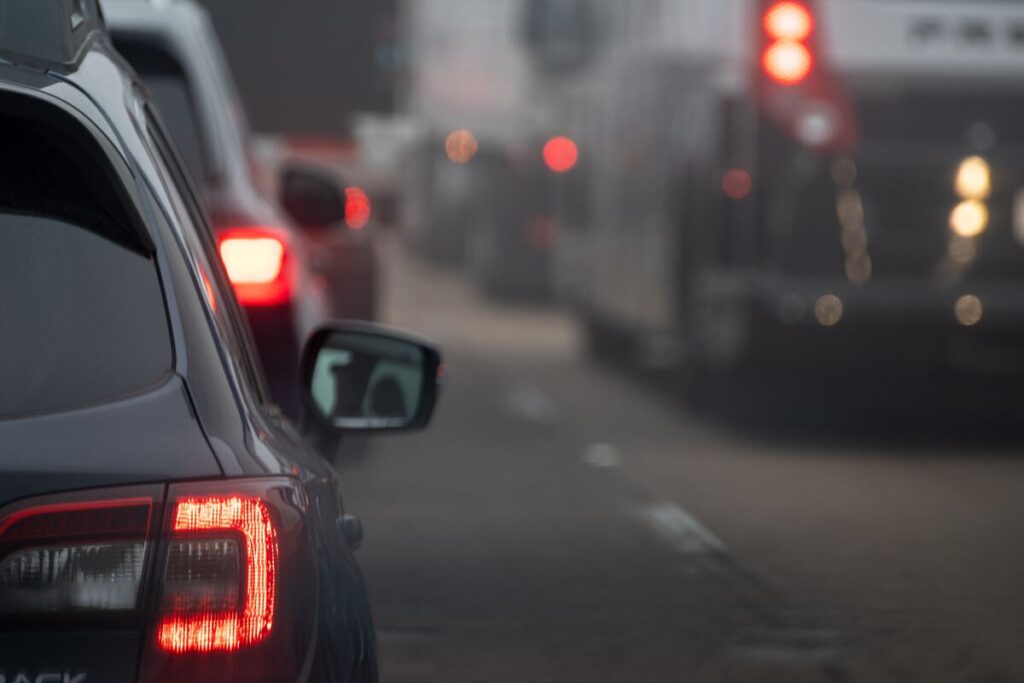
Brake lights are brighter than any side light or tail light. These lights get activated after pressing the brake pedal and alert the rear traffic or any car approaching from behind that you are slowing your vehicle or going to a standstill position. Brake lights are used to alert other drivers that the vehicle in front of them is slowing down or stopping. They are important for helping to reduce the chances of rear-end collisions and other accidents. Brake lights also let the driver behind you know how quickly you are braking so they can adjust their speed accordingly.
When to Use Brake Lights
- slowing down or stopping
- changing lanes
- Making a turn
- driving in bad weather conditions
- going down a steep hill
- coming to an intersection or a crossroad
- entering or leaving a highway
4. Hazard lights
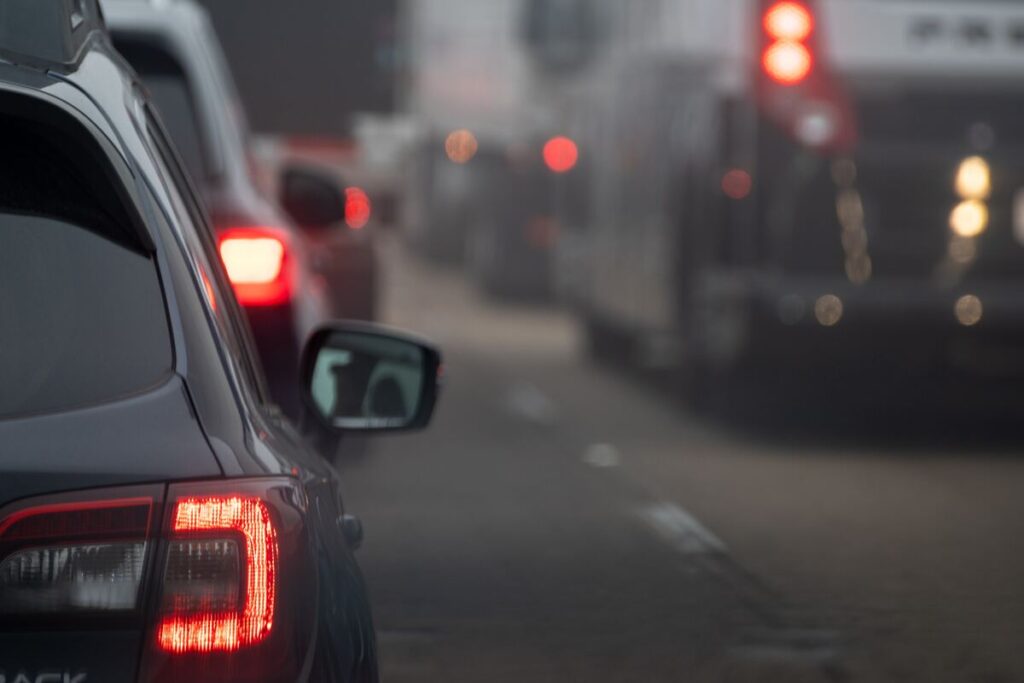
If you switch on the hazard lights of your vehicle, the indicator lights will flash constantly and simultaneously. These warning lights are used to indicate a car is stopped or disabled on the highway. They are used to warn other drivers of a potential hazard. However it is not recommended to use these lights as an excuse for parking a vehicle in an unsafe or inconsiderate way.
When to Use Hazard lights
- driving in fog, rain, or snow
- pulled over on the side of the road
- stopped in a traffic jam
- driving slowly due to a mechanical problem
- driving through a construction zone
- want to warn other drivers of a vehicle stopped ahead
5. Fog lights
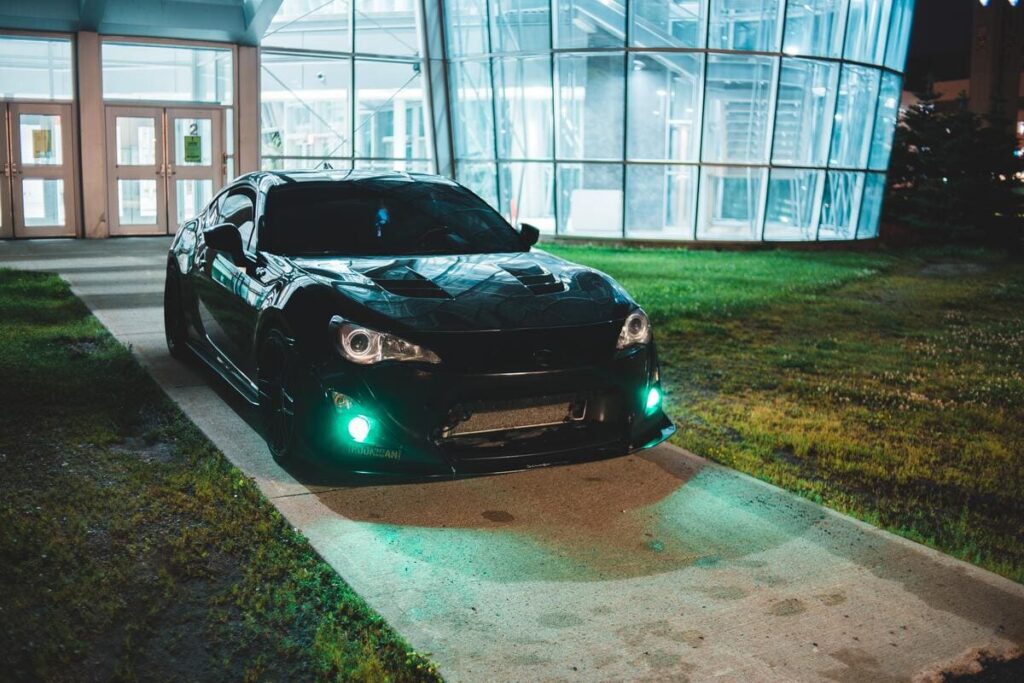
During heavy fog or other unpleasant weather conditions, when the visibility on the roadway gets reduced, your vehicle should have the right type of lights to help you avoid any hazardous situation and drive safely. Thanks to fog lights, driving during such a condition is easier than ever. Front fog lights are located just below the headlights and illuminate the ground under the fog. The rear fog lights work like brake lights and alert the traffic behind you during low-visibility situations.
When to Use Fog lights
- visibility is reduced due to fog, rain, snow, dust, or smoke
- driving on unlit roads at night
- driving in rural areas at night or extreme weather conditions
- following another vehicle too closely
6. Daytime Running Lights (DRLs)
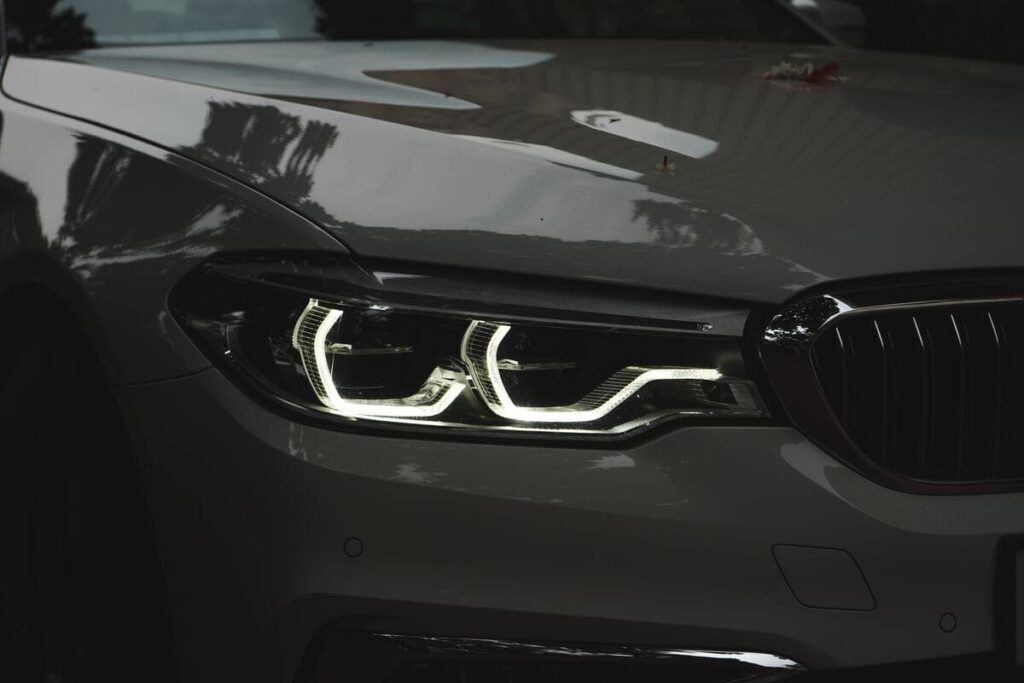
These are the low-wattage white lights, placed around the headlights on the front fascia close to the sides of a vehicle. They illuminate the front view of a vehicle and make it visible to the drivers and pedestrians you are going towards. Unlike headlights and fog lights that point downward, Daytime Running Lights point forward. During dim sunlight, at dusk or on cloudy days, these lights perform the best.
When to Use Daytime Running Lights or DRLs
- driving in low light or foggy conditions
- visibility is poor due to rain, snow, or sleet
- the sun is low on the horizon
- the vehicle is in a construction zone or near a school zone
- driving in a rural area or on a dark road
Conclusion
Car lights are essential to ensuring safe and successful travels. Even though many car lights can be seen as simple ornaments, they serve a crucial purpose in protecting the driver, other cars, and pedestrians. Different types of car lights may assist you in unique ways such as helping you signal when changing lanes or locating your car in a dark garage or alley. Certain models may even reduce the chance of collisions by alerting you that another vehicle is coming on the same trajectory. Taking care of your vehicle’s lights helps ensure smooth driving and minimizes risks while on the road.
